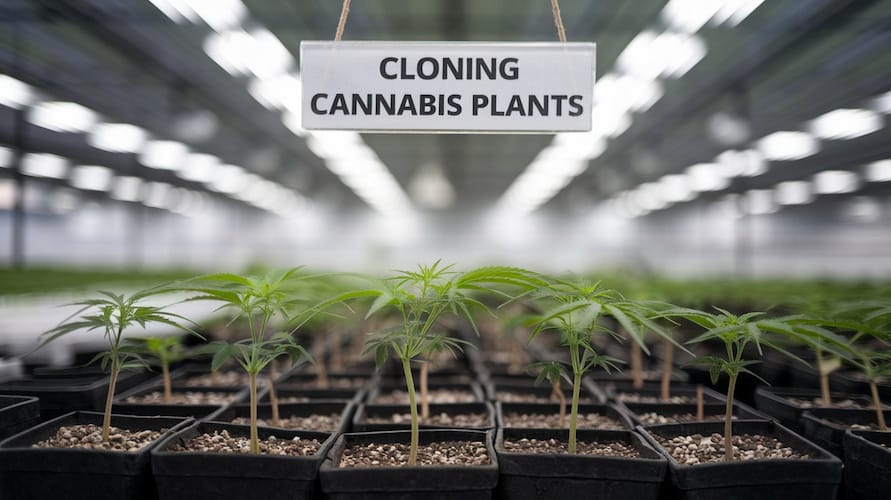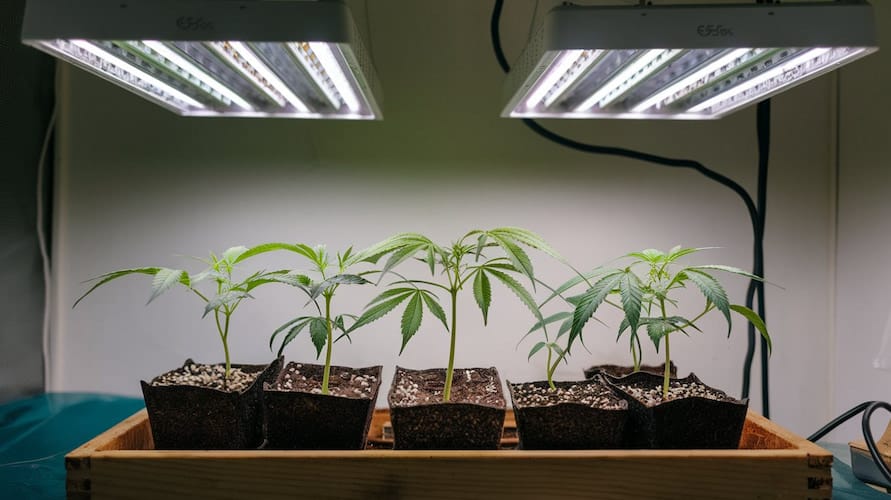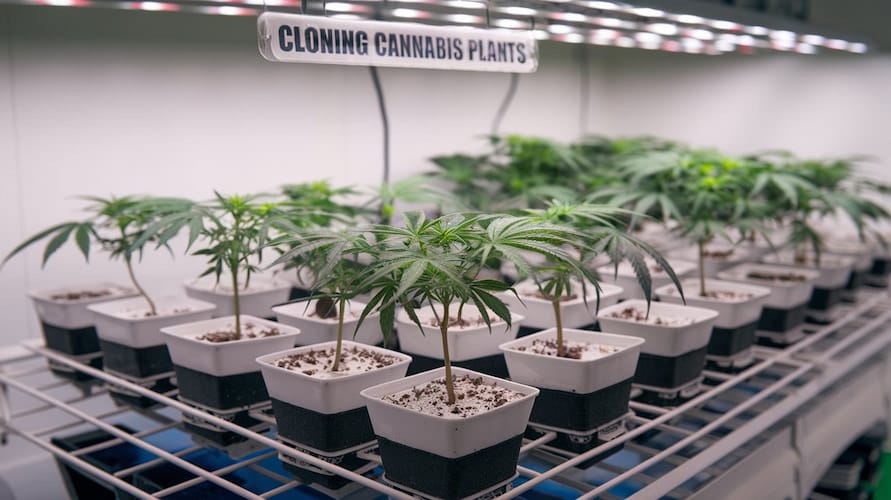Cloning cannabis plants is a popular and effective method of propagation for growers seeking consistency, efficiency, and quality. By cloning, you’re essentially creating a genetic copy of your mother plant, ensuring uniform traits in every harvest. This process not only saves time but also allows growers to preserve their favorite strains indefinitely. Whether you’re a seasoned cultivator or a curious beginner, this guide will walk you through everything you need to know about cloning cannabis plants, from preparation to troubleshooting and advanced techniques.
Why Clone Cannabis Plants?
Cloning cannabis plants offers numerous benefits that make it an appealing choice for growers. One of the most significant advantages is consistency. Unlike seeds, which can produce plants with varying phenotypes even within the same strain, clones are exact genetic replicas of the mother plant. This ensures that every plant exhibits identical growth patterns, potency, flavor, and yield potential.
Cloning also saves time. Seeds require germination and a longer vegetative phase before they can be transplanted, while clones skip these early stages and quickly establish themselves. This efficiency is particularly beneficial for commercial growers aiming for rapid turnover. Additionally, cloning is cost-effective. Once you have a healthy mother plant, you can generate an endless supply of new plants without the recurring expense of purchasing seeds. Finally, cloning is a preservation tool, allowing you to maintain the genetics of rare or exceptional strains that might otherwise be lost.
Preparing for Cannabis Cloning
Preparation is critical to the success of cloning cannabis plants. Having the right tools and setting up a suitable environment can significantly improve the likelihood of success. A clean and organized workspace helps minimize contamination and ensures that your cuttings have the best chance to root.
Tools You’ll Need
- Healthy mother plant: Select a vigorous, pest-free plant with traits you wish to replicate. The health of the mother plant directly impacts the quality of the clones.
- Sharp, sterilized scissors or razor blade: A clean, precise cut minimizes stress on the cutting and reduces the risk of infection.
- Rooting hormone: Available in gel, powder, or liquid form, rooting hormone stimulates the development of roots by promoting cell division.
- Growing medium: Choose from options like rockwool cubes, peat pellets, or a light, well-aerated soil mix. Each medium has its advantages, so select one based on your preferences and setup.
- Humidity dome: Maintaining high humidity is essential for preventing the cuttings from drying out before roots form.
- Clone tray or container: These provide stability for your cuttings and help organize your workspace.
- Spray bottle: Misting the cuttings keeps them hydrated and prevents wilting.
- Lighting: Low-intensity grow lights, such as fluorescent or LED lights, are ideal for clones as they don’t require intense illumination during rooting.
Selecting and Preparing the Mother Plant
A robust mother plant is the foundation of successful cloning. Taking cuttings from a weak or unhealthy plant will likely result in clones that struggle to thrive. Here are some steps to prepare your mother plant:
- Choose a healthy plant: Look for a mother plant with thick stems, vibrant green foliage, and no signs of pests or disease. The plant should exhibit the traits you want to replicate, such as high potency, desirable flavor, or high yield.
- Nutrient adjustment: About a week before taking cuttings, reduce the nitrogen levels in the mother plant’s feed. Excessive nitrogen can lead to lush vegetative growth but may inhibit root formation in cuttings. Reducing nitrogen encourages the plant to allocate energy towards root development.
- Hydration: Ensure the mother plant is well-hydrated by watering it thoroughly 24 hours before taking cuttings. Proper hydration helps the cuttings retain moisture during the critical early stages of rooting.
Step-By-Step Cloning Process
Cloning cannabis plants requires precision and care. Follow these steps to ensure high success rates and healthy clones:
1. Choose the Right Branches
When selecting branches for cloning, focus on the lower parts of the plant. These branches contain higher concentrations of rooting hormones, making them more likely to root successfully. Look for branches with 3-4 nodes and avoid using overly woody or brittle stems. Younger, more flexible stems are ideal.
2. Make the Cut
Using a sharp, sterilized tool, cut the branch at a 45-degree angle just below a node. The angled cut increases the surface area for rooting, improving the likelihood of success. Immediately place the cutting in water to prevent air bubbles from entering the stem, as this can block nutrient uptake and hinder root development.
3. Trim the Cutting
To reduce water loss through transpiration, remove most of the large fan leaves from the cutting. Leave only a couple of smaller leaves at the top to allow for photosynthesis. If the remaining leaves are particularly large, trim their tips to further minimize moisture loss.
4. Apply Rooting Hormone
Dip the freshly cut end of the stem into your chosen rooting hormone. Ensure that the cut end is evenly coated, then tap off any excess. Rooting hormone stimulates the growth of new root cells, significantly increasing the success rate of your clones.
5. Plant in the Growing Medium
Insert the treated stem into your chosen growing medium. Make sure the stem is securely positioned and that the medium is in contact with the cutting. Mist the cutting lightly with water and place it under a humidity dome to create a moist, protected environment.
6. Provide Optimal Conditions
- Humidity: Maintain a high humidity level (70-80%) by using a dome and misting the cuttings regularly.
- Temperature: Keep the environment between 72-78°F. A stable temperature promotes healthy root development.
- Light: Provide gentle, low-intensity light on an 18/6 schedule (18 hours of light and 6 hours of darkness).
- Airflow: Ensure good ventilation to prevent mold and mildew, but avoid direct drafts that could dry out the cuttings.
Caring for Clones During Rooting
The rooting phase is a delicate time for your clones. Proper care and attention can make the difference between success and failure. Here’s how to nurture your clones:
- Monitor moisture levels: Keep the growing medium consistently moist but not soggy. Overwatering can lead to root rot, while underwatering can cause the cuttings to dry out.
- Check for root development: After 7-10 days, gently tug on the cutting. Resistance indicates that roots are forming. Be patient, as some strains may take longer to root.
- Avoid overhandling: Limit how often you disturb the cuttings. Excessive handling can stress the plants and slow the rooting process.
Transplanting Rooted Clones
Once your clones have developed strong, healthy roots, it’s time to transplant them into larger containers or directly into your grow space. Proper handling during this phase is crucial to avoid transplant shock.
Steps for Transplanting
- Prepare the new pot: Use a well-aerated, nutrient-rich soil mix or your preferred hydroponic medium. Make sure the container is appropriately sized for the clone’s next growth stage.
- Handle with care: Gently remove the clone from its initial medium, taking care not to damage the delicate roots. If the clone is in a plug or cube, you can transplant it directly without removing it.
- Plant securely: Position the clone in its new pot and cover the roots completely with the medium. Press lightly to secure the plant without compacting the soil too much.
- Water lightly: Water the clone immediately after transplanting to help settle the roots and medium. Avoid overwatering, as the roots still need oxygen.
- Monitor closely: Keep an eye on the clone for signs of transplant shock, such as wilting or discoloration. Adjust environmental conditions as needed to support recovery.
Troubleshooting Common Cloning Issues
Despite your best efforts, challenges can arise during the cloning process. Here are some common issues and how to resolve them:
Problem: Yellowing Leaves
- Cause: Yellowing is often due to overwatering, low humidity, or a lack of nutrients.
- Solution: Adjust your watering practices, ensure the humidity dome is properly sealed, and avoid feeding the cuttings until roots are established.
Problem: Wilting Cuttings
- Cause: Insufficient humidity or an improper cut can cause wilting.
- Solution: Increase humidity levels by misting more frequently and ensure cuts are made cleanly with sterilized tools.
Problem: Slow Root Development
- Cause: Low temperatures or inadequate lighting can slow root growth.
- Solution: Maintain a stable temperature range of 72-78°F and ensure your lighting is suitable for clones.
Advanced Cloning Techniques
Experienced growers may explore advanced cloning methods to improve efficiency and success rates. These techniques require additional equipment and expertise but can yield impressive results.
Aeroponic Cloning
Aeroponic systems use a fine mist to deliver oxygen and nutrients directly to the cuttings. This method promotes faster root development and reduces the risk of overwatering or root rot. While aeroponic systems require an upfront investment, they are highly efficient for large-scale operations.
Tissue Culture
Tissue culture involves growing plant cells in a sterile laboratory environment. This method is ideal for preserving rare genetics, eliminating pathogens, and producing disease-free clones. Although it’s more complex and requires specialized equipment, tissue culture is an invaluable tool for professional growers.
Foliar Feeding
Clones can benefit from foliar feeding during the rooting phase. Misting the cuttings with a diluted nutrient solution provides essential nutrients without relying on the roots, which are still developing.
Tips for Long-Term Cloning Success
To ensure consistent success with cloning, adopt these best practices:
- Rotate mother plants: Over time, mother plants can lose vigor due to repeated cloning. Replacing them with new, healthy mothers ensures continued quality.
- Label clones: Keep track of strain names, dates, and other details to stay organized, especially when working with multiple strains.
- Experiment: Test different growing mediums, rooting hormones, and environmental conditions to find what works best for your specific setup and strains.
Frequently Asked Questions (FAQs)
Can I clone autoflowering cannabis?
While it’s technically possible to clone autoflowering strains, it’s not recommended. Autoflowers begin their flowering cycle based on age rather than light schedule, meaning clones will flower at the same time as the mother plant, regardless of size. This limits the usefulness of cloning autoflowers.
How many times can I clone a clone?
You can clone a clone multiple times, but each successive generation may lose vigor and quality if the mother plants aren’t maintained properly. It’s best to clone directly from a healthy mother plant whenever possible.
What’s the success rate for cloning cannabis?
With proper techniques and conditions, success rates can range from 80-100%. Factors such as strain, environment, and grower experience play a role in the success rate.
Do clones yield the same as seeds?
Yes, clones can yield the same as seeds if grown under similar conditions. The primary advantage of clones is their uniformity, which leads to predictable results in terms of growth, potency, and yield.
Cloning Cannabis Plants: Conclusion
Cloning cannabis plants is an invaluable skill for growers aiming to optimize their gardens. By following this comprehensive guide, you’ll be equipped to produce healthy, thriving clones and preserve your favorite strains for years to come.
Ready to get your garden started? Shop the wide selection of premium cannabis clones at Seeds Here Now.





